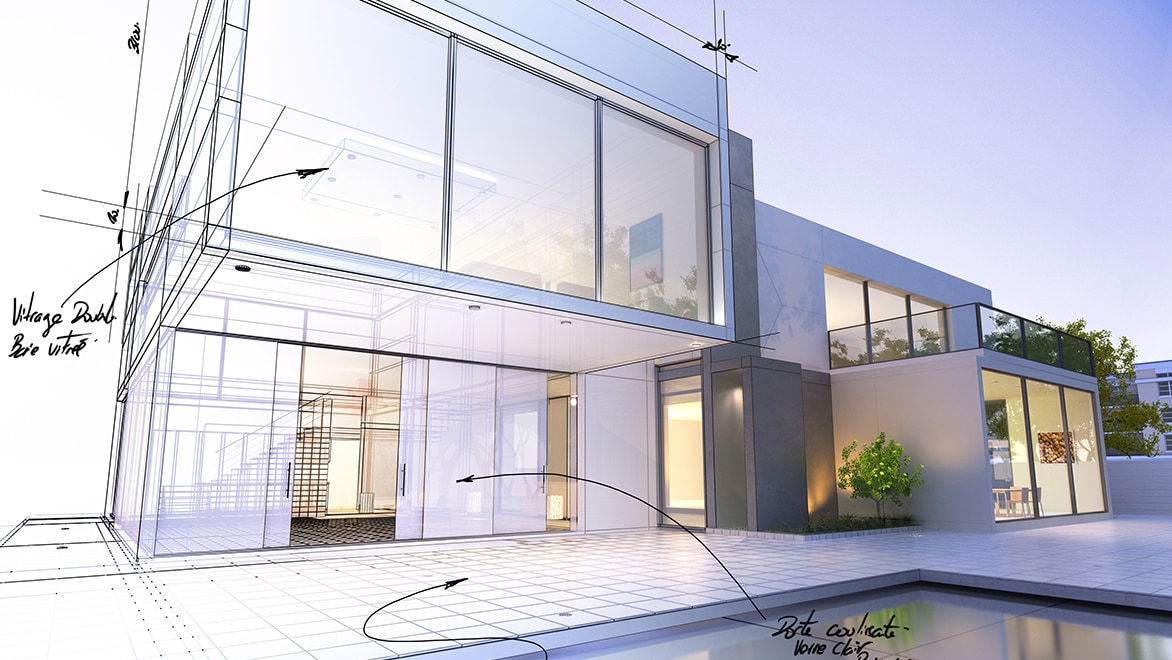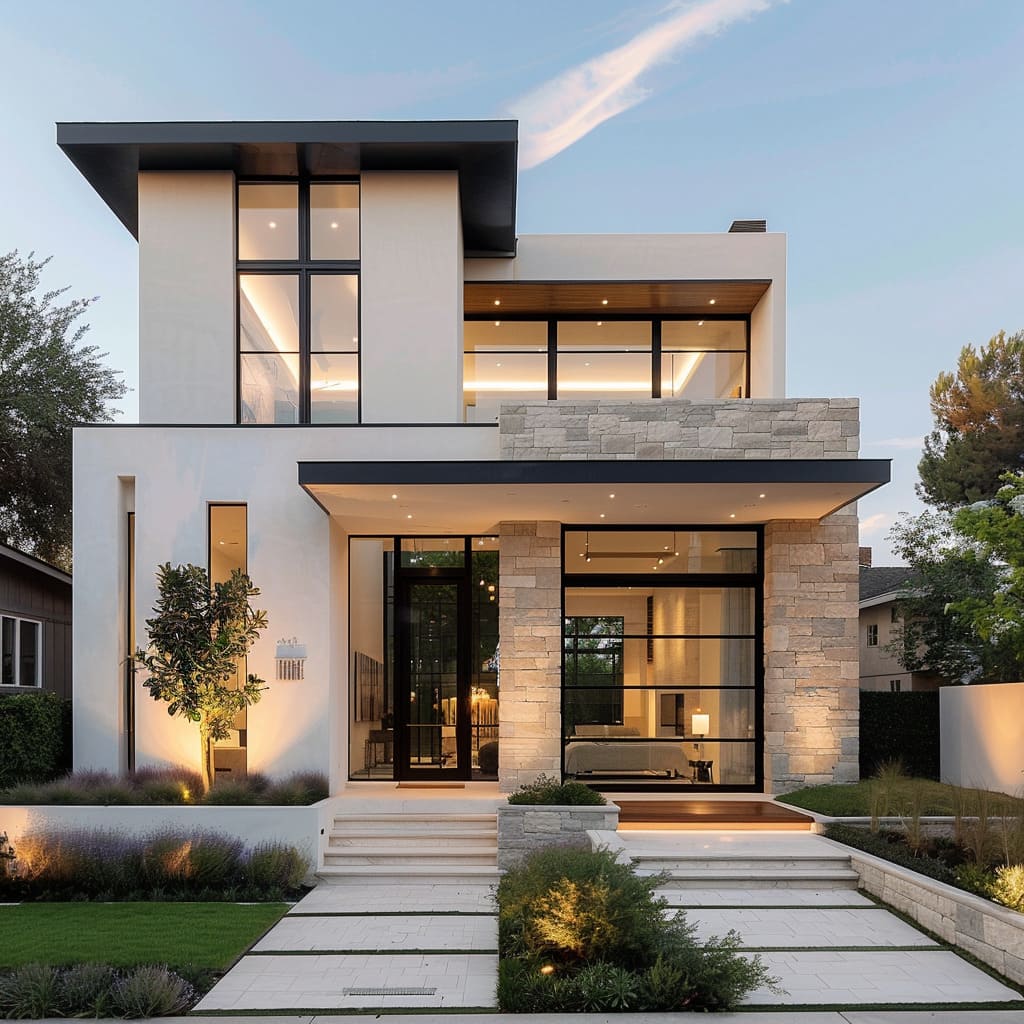The Influence of Technological Advancements on the Style Practices of Contemporary Architects
The quick development of technical tools has actually significantly improved the layout landscape for modern architects, fostering extraordinary levels of advancement and sustainability. The integration of Structure Info Modeling (BIM), parametric design, and expert system has not just structured partnership among diverse groups however also redefined project implementation. As architects welcome these innovations, they are confronted with complicated challenges that could influence their creative procedures. Exploring these characteristics reveals a nuanced interplay in between modern technology and typical layout approaches, motivating a closer assessment of what the future holds for building practices.
Development of Architectural Tools
Exactly how have building tools transformed the style and construction processes over the centuries? The evolution of architectural devices has considerably affected the effectiveness, precision, and imagination of layout and building.
With the development of the Renaissance, the introduction of the compass and the protractor noted an essential shift. These devices allowed engineers to attain higher accuracy in their layouts, assisting in the development of even more complex and proportionate buildings. The Industrial Change even more changed building technique with the intro of mechanized tools and materials, permitting for larger and more ambitious jobs.
In the 20th century, the growth of computer-aided style (CAD) software program changed the landscape when again, offering designers with unmatched capabilities in modeling and visualization. Today, progressed tools such as Building Info Modeling (BIM) and parametric layout software application remain to push the boundaries of building development, making it possible for an extra incorporated method to design and building procedures.
Boosted Collaboration in Layout
As modern technology remains to develop, improved cooperation in design has ended up being a keystone of modern-day architectural practice. The integration of electronic devices such as Building Info Modeling (BIM), cloud-based systems, and progressed visualization software application has changed the way architects, engineers, and stakeholders connect throughout the layout process. These tools promote real-time interaction, allowing teams to share concepts, alterations, and feedback instantaneously, no matter geographical location.

In addition, interdisciplinary collaboration has actually been streamlined through these technical developments, enabling designers to work a lot more closely with other experts, such as city planners and environmental consultants. The outcome is a more natural method to design that thinks about various perspectives and experience. Ultimately, improved collaboration in design is not just a fad; it is crucial for creating innovative, practical, and aesthetically pleasing architecture in a significantly complicated world.
Sustainability Through Innovation
Sustainability in style has progressively come to be linked with technological advancement, driving the industry towards ecologically liable methods - cda architects. Contemporary engineers are leveraging sophisticated modern technologies to minimize ecological effect while improving the performance of structures. One noticeable instance is the use of Building Info Modeling (BIM), which enables for accurate planning and resource click this allowance, lowering waste throughout construction and advertising power performance throughout a structure's lifecycle
Moreover, clever materials and energy-efficient systems are being integrated right into layouts to maximize source use. Technologies such as photovoltaic or pv cells and green roofing systems harness renewable resource sources, adding to reduced carbon footprints. Furthermore, the application of artificial intelligence in design processes allows architects to replicate and examine energy usage, guiding decisions towards more sustainable end results.
The assimilation of sustainable innovations not just aligns with global ecological objectives however additionally satisfies an enhancing need from customers for environmentally friendly services. As designers go to this website embrace these technologies, the emphasis changes towards creating rooms that are not just cosmetically pleasing however additionally functionally lasting, thus redefining the requirements of contemporary architecture. In this way, modern technology acts as a driver for sustainability, enabling designers to create buildings that respect and enhance the native environment.
Challenges in Execution
While technological developments in architecture hold excellent pledge for enhancing sustainability, their implementation often comes across substantial challenges - cda architects. One key barrier is the steep learning contour connected with new innovations. Engineers and building specialists might need substantial training to properly utilize advanced software application and tools, which can postpone job timelines and boost costs
Additionally, the combination of emerging innovations, such as Structure Info Modeling (BIM) and sustainable materials, usually necessitates partnership throughout multidisciplinary teams. This collaboration can be prevented by differences in experience, workflows, and communication styles, causing potential problems and inefficiencies.
Financial restrictions better make complex this the fostering of cutting-edge modern technologies. Several architectural firms, specifically smaller ones, may lack the resources to invest in cutting-edge devices, limiting their capacity to take on bigger companies that can afford such investments.
Furthermore, regulative structures and building regulations may not maintain speed with technological improvements, creating obscurity and possible compliance issues. This difficulty can dissuade designers from completely welcoming new modern technologies, as the threat of non-compliance might exceed the advantages. Therefore, dealing with these implementation obstacles is vital for the effective combination of technological developments in contemporary architectural methods.
Future Trends in Architecture
The difficulties related to the application of new innovations in style have actually motivated a reevaluation of future trends within the industry. As designers browse problems such as sustainability, urbanization, and social equity, they are increasingly embracing cutting-edge innovations to improve design efficiency and environmental performance.
One famous pattern is the integration of expert system (AI) in the layout procedure. AI tools can examine large datasets to educate layout choices, enhancing both imagination and functionality. Similarly, Building Info Modeling (BIM) proceeds to develop, enabling real-time collaboration among stakeholders and facilitating streamlined project administration.
Lasting design methods are also getting momentum, with architects concentrating on flexible reuse and regenerative layout concepts that minimize resource intake and waste. The incorporation of smart products and renewable resource resources will certainly better improve the strength of structures in the face of environment modification.

Verdict
Technical developments have actually significantly improved building design techniques, assisting in boosted precision, partnership, and sustainability. The assimilation of tools such as Structure Info Modeling and parametric style software application, alongside synthetic intelligence and smart materials, empowers designers to deal with intricate obstacles better. While application may present particular challenges, the continued development of these modern technologies promises to drive development in design. Future trends will likely better emphasize sustainability and performance, eventually redefining the built atmosphere.